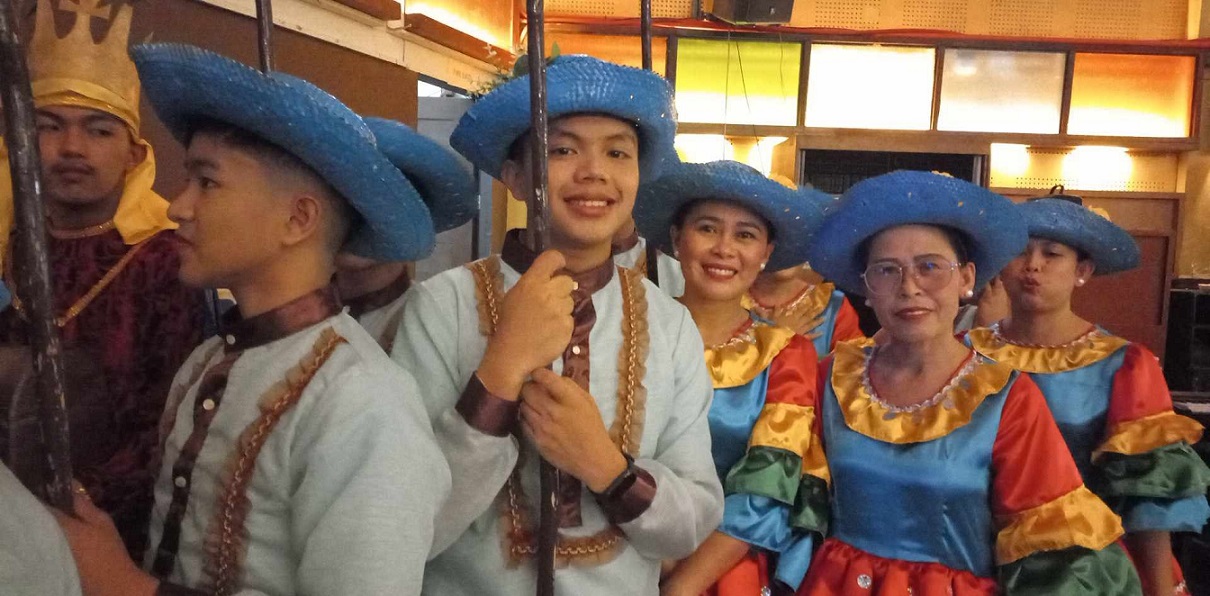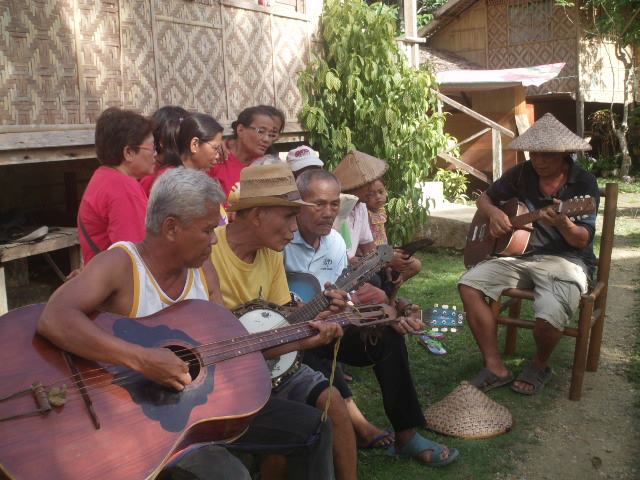
Bohol’s young people are giving hope that the province’s cherished tradition of Dayegon would not suffer extinction and continue to be enjoyed by future generations.
Three years ago. in an effort to save Dayegon (Praise) from becoming a thing of the past, the Bol-anon Village Cultural Trails, a heritage-based organization in the village, trained three young talents to help the cultural bearers in the documentation of the Dayegon sa Igue-igue.
This was with the help of the Literary Arts Committee Bohol Arts and Cultural Heritage Council (BACH) and the Center for Culture and Arts Development (CCAD) of the provincial government.

In the beginning, 14-year old pop music lover Jomar Sumabong from Toril village found it difficult to follow the Dayegon beat as demonstrated by comparza player and cultural bearer Hermogenes Baldecana but later on managed to be part of the accompanying comparza team. “That boy just needs to be encouraged more to make him stick to playing in the comparza,” Ma. Elena Borcelas, 52, said.
Sheena May Madaje, resident of Toril, Maribojoc, was a student of the Bohol Island State University (BISU) Agriculture College in Bilar town when she started to learn accompanying the Daygon singers with a guitar.
Noel Jayectin, an alumnus of BISU-Bilar. learned faster since he was already a skilled guitar player, and became a trainor too. He is from Bilar town and currently working out of Bohol.

Origin of Dayegon
Introduced in the country during the Spanish colonial era, the Dayegon traces its roots back to the posadas tradition of Mexico, which commemorates the journey of Mary and Joseph seeking shelter before the birth of Christ. Over time, this tradition evolved in Bohol incorporating local influences, mixing elements of Spanish melodies with Filipino musical styles.
The songs are characterized by their lively, rhythmic beats and harmonious vocal arrangements, typically performed by groups of singers who go door-to-door, offering festive greetings in exchange for small gifts or donations. This practice fosters camaraderie and strengthens community bonds.
As Dayegon musicians and singers age and younger generation indulge in other kinds of music, there was concern of it vanishing from Bohol’s cultural landscape.

Health issues of musicians
The dire situation was best expressed by Borcela when she was asked if her group of village carolers will start practicing for Dayegon sa Igue-igue (praise and driven away), which traditionally begins Dec. 16 coinciding with the start of misa de gallo. She replied, “How can we do that when our banjo, bajo and other players could hardly play their instruments anymore due to aching fingers, Alzheimers symptoms, etc.”
She added: “There are many manaygonay, but we need the accompaniment.”
Hermogenes Baldecana, 73, a banjo player, visually impaired, and a member of a Dayegon comparza, needs to be accompanied by his niece in crossing the village road on his way to collect his senior citizen’s payout. Still he asks, “I miss our Dayegon sessions, when do we start?It’s the season now.”
Borcelas can only smile as she knows Baldecana may be willing, but his hands can no longer strum the banjo properly.

Efforts to counter threat of extinction
The Dayegon is more than just a Christmas tradition for Boholanos. A study credits it as “a crucial cultural heritage that fosters social cohesion and serves as a reminder of a communal identity deeply rooted in faith.”
Vida Tirol de Juan, CCAD project officer said they have lined up activities to sustain interest in Dayegon such as arranging choir notations that can be taught and passed on to younger choirs or school groups.
Last Dec. 14, CCAD launched the “Kasadya sa Bohol,” where seven rondallas, eight chorale groups and two pastores groups competed in their rendition of Dayegon Rondalla, Dayegon Chorale and Dayegon sa Pastores.
Among the winners were rondalla from Loboc town, chorale from Loon, and the pastores of Garcia-Hernandez.

Baclayon Museum officer Athena Garcia Vitor said the performances proved that these Dayegon musical variations are still alive in the hearts of Boholanos amid all the challenges such as the pandemic, a major typhoon in 2021 and modern musical influences,
In addition to the core Dayegon performances, other expressions of this tradition include Pastores and Rico-rico, which also draw on local music and theater. Pastores focuses on the shepherds who visited the nativity, often marked by lively, rhythmic songs and dances.Rico-Rico, on the other hand, features playful and catchy tunes that celebrate the Christmas spirit, sometimes including humorous or exaggerated portrayals of the “tagbalay nga palaran” (wealthy homeowner) and local life. These performances, while less formal than the standard Dayegon carols, add to the vibrant, festive atmosphere that permeates the community during this season.
There is reason to hope that Dayegon will endure and continue to echo through the hills of Bohol for years to come.

